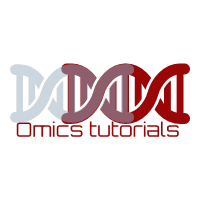
Bionformatics glossary – C
November 9, 2018A | B | C | D | E | F | G | H | I | J | K | L | M | N | O | P | Q | R | S | T | U | V | W | X | Y | Z
Bionformatics glossary – C

Carboxyl group
The -COOH functional group, acidic in nature, found in all amino acids
cDNA (complementary DNA)
A DNA strand copied from mRNA using reverse transcriptase. A cDNA library represents all of the expressed DNA in a cell.
cDNA library
A set of DNA fragments prepared from the total mRNA obtained from a selected cell, tissue or organism.
Cell
The basic unit of any living organism.
Cell Cycle
The life cycle of a cell which is marked by cell division which is separated into four phases: G1, S, G2, and M. DNA replication is confined to the S(synthesis) phase, and chromosomal separation in the M (mitotic) phase .
Chimeric clone
A cloning artifact created by a foreign gene being inserted into a vector in an incorrect orientation resulting in theexpression of a protein consisting of a fusion of two different gene products.
Chromat
Data file output from most popular DNA sequencers. Chromat files consist of the fluorescent traces generated by the sequencer for each of the four chemical bases, A, C, G, and T, together with the sequence and measures of the error in the traces at each sequence position.
Chromatin
The chromosome as it appears in its condensed state, composed of DNA and associated proteins (mainly histones).
Chromosome
The structure in the cell nucleus that contains all of the cellular DNA together with a number of proteins that compact and package the DNA.
Research studies that involve patients. Biotechnology companies typically use clinical trials to assess the efficacy and safety of new therapies and to answer scientific questions. Typically, there are 3 phases during a clinical trial. Phase I is designed to evaluate the safety of the product in humans; phase II analyses the effects of dose escalation, and phase III definitively evaluates the clinical efficacy of the product.
Clone
A population of genetically identical cells or DNA molecules.
Cloning
The formation of clones or exact genetic replicas.
Cluster
The grouping of similar objects in a multidimensional space. Clustering is used for constructing new features which are abstractions of the existing features of those objects. The quality of the clustering depends crucially on the distance metric in the space. In bioinformatics, clustering is performed on sequences, high-throughput expression and other experimental data. Clusters of partial or complete gene sequences can be used to identify the complete (contiguous) sequence and to better identify its function. Clustering expression data enables the researcher to discern patterns of co-regulation in groups of genes.
Coding regions (CDS)
The portion of a genomic sequence bounded by start and stop codons that identifies the sequence of the protein being coded for by a particular gene.
Codon
A sequence of three adjacent nucleotides that designates a specific amino acid or start/stop site for transcription.
Combinatorial chemistry
The use of chemical methods to generate all possible combinations of chemicals starting with a subset of compounds. The building blocks may be peptides, nucleic acids or small molecules. The libraries of compounds formed by this methodology are used to probe for new pharmaceutical reagents (see high-throughput screening).
Complementary determining region (CDR)
The hypervariable regions of an antibody molecule, consisting of three loops from the heavy chain and three from the light chain, that together form the antigen-binding site.
Complexity (of gene sequence)
The term “low complexity sequence” may be thought of as synonymous with regions of locally biased amino acid composition. In these regions, the sequence composition deviates from the random model thatunderlies the calculation of the statistical significance (P-value) of an alignment. Such alignments among low complexity sequences are statistically but not biologically significant, i.e., one cannot infer homology (common ancestry) or functional similarity.
Configuration
(in software) The complete ordering and description of all parts of a software or database system. Configuration management is the use of software to identify, inventory and maintain the component modules that together comprise one or more systems or products.
Conformation
The precise three-dimensional arrangement of atoms and bonds in a molecule describing its geometry and hence its molecular function.
Consensus sequence
A single sequence delineated from an alignment of multiple constituent sequences that represents a “best fit” for all those sequences. A “voting” or other selection procedure is used to determine which residue (nucleotide or amino acid) is placed at a given position in the event that not all of the constituent sequences have the identical residue at that position.
Constitutive synthesis (expression)
Synthesis of mRNA and protein at an unchanging or constant rate regardless of a cell’s requirements (see housekeeping genes).
Contig
A length of contiguous sequence assembled from partial, overlapping sequences, generated from a “shotgun” sequencing project. Contigs are typically created computationally, by comparing the overlapping ends of several sequencing reads generated by restriction enzyme digestion of a segment of genomic DNA. The creation of contigs in the presence of sequencing errors, ambiguities and the presence of repeats is one of the most computationally challenging aspects of the role of Bioinformatics in genome analysis.
Convergence
The end-point of any algorithm that uses iteration or recursion to guide a series of data processing steps. An algorithm is usually said to have reached convergence when the difference between the computed and observed steps falls below a pre-defined threshold.
Cosmids
DNA vectors that allow the insertion of long fragments of DNA (up to 50 kbases).
Crystal structure
Term used to describe the high resolution molecular structure derived by x- ray crytallographic analysis of protein or other biomolecular crystals.
Cytoplasm
The medium of the cell between the nucleus and the cell membrane.
Cytosine
A pyrimidine base found in DNA and RNA.
















